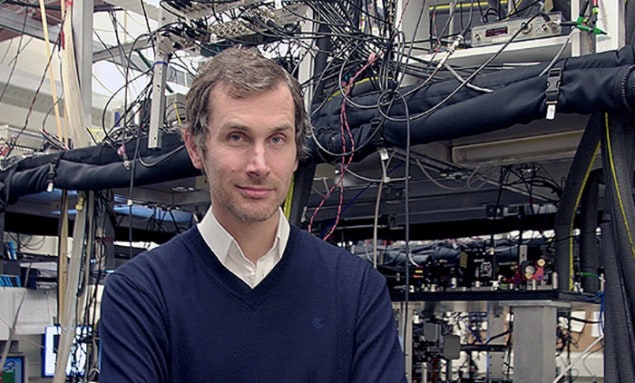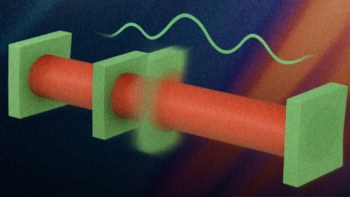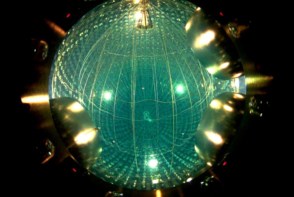
A measurement made under the “wrong” experimental conditions has given physicists in Canada and China an unexpected insight into how atoms interact with each other in ultracold gases.
Scott Smale was a new PhD student in the lab of Joseph Thywissen at the University of Toronto, when he took spectroscopy data from an ensemble of trapped potassium atoms that were accidently set to interact with each other via a p-wave process, where the atoms do not collide head-on. This was a mistake because conventional wisdom holds that p-wave interactions make atoms very difficult to trap, and the ensemble would very quickly disperse before Smale saw anything. Instead, he was able to measure very distinct features of a gas dominated by p-wave interactions, which he and his colleagues then set about studying in much more detail.
“Nature surprised us,” says Thywissen. “There was a beautiful spectroscopic signal of a new kind of pressure that was due to p-wave interactions.”
P-wave interactions occur when two particles collide with a glancing blow. If the force between the atoms is attractive, the atoms can become bound together in a quantum state with orbital angular momentum.
Contact collisions
To better understand what was going on in its experiment, the Toronto team joined forces with theorists Shizhong Zhang of Hong Kong University and Zhenhua Yu of Tsinghua University. The researchers defined the collisions between atoms in terms of two “contact” parameters. This description differs from that of an ultracold gas in which head-on s-wave collisions dominate and just one contact parameter is needed to describe the pressure due to collisions.
The researchers then measured the values of the contact parameters using a technique called dynamical spectroscopy, which allowed them to prepare and probe the atoms faster than had been done in the past. “Our observations took less than a millisecond,” says Thywissen. “Previous studies were searching for properties that required longer observation. It allowed us to see something before the losses became too significant.”
The study involved two different experimental scenarios. In the first, radio waves were fired at the gas, which caused some of the atoms to transition to an atomic state that does not interact via p-wave collisions. Careful analysis of the transition rate as a function of the applied radio frequency gives the team values for both contact parameters. The second scenario involved switching off the trapping magnetic field and allowing the gas to expand for several microseconds. The momentum distribution of the atoms is then measured and values for contact parameters were derived from these data.
Physicists already know that p-wave interactions play an important role in superfluid helium-3, which forms at ultracold temperatures when fermionic helium-3 atoms become bound into p-wave pairs. These pairs are bosons, which can then condense into a superfluid. The p-wave pairing of electrons is also thought to play a role in the superconductivity of some materials, however evidence for this remains very sketchy.
Trapped gases of ultracold atoms offer physicists a way of studying how interactions between atoms or electrons result in phenomena such as superconductivity and superfluidity. This is because the strength of the interactions between ultracold atoms can be “dialled up” by adjusting the magnetic fields that are used to trap the gas.
Looking for condensation
The team is now designing new experiments to gain a better understanding of p-wave interactions. According to team-member Chris Luciuk, dealing with the loss of atoms to keep the gas together for a longer time is still a key challenge. Options for boosting the lifetime of the gas include confining the atoms to two dimensions and using a laser as well as magnetic fields to fine-tune the interactions. “Ideally, we could look for p-wave pairing leading to condensation,” Luciuk told physicsworld.com.
The research is described in Nature Physics.



